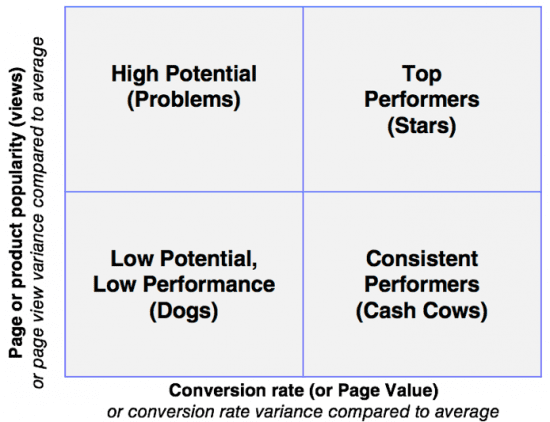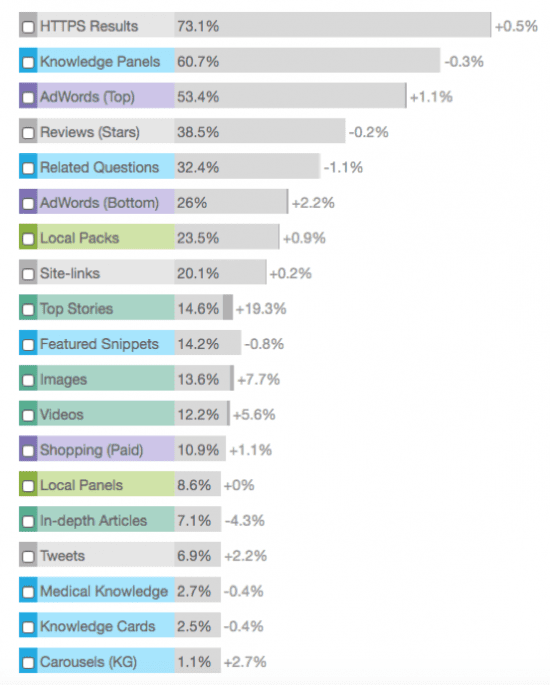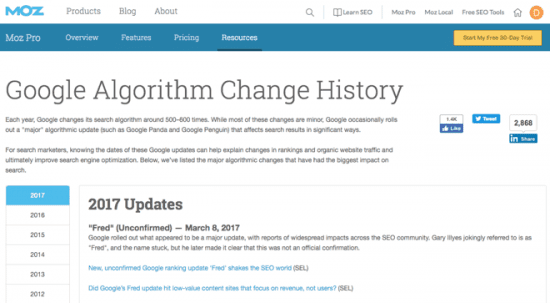8 areas of innovation to improve your organic and paid search marketing strategy
As part of our digital marketing trends for 2018, we have created a series of posts focused on different channel trends and statistics to help inform the best practices needed to move forward with your marketing strategy in 2018.
Now, in Partnership with Vertical Leap, we have now produced a briefing guide on the latest organic and paid search innovations for marketing managers to review and action.
Click here for the full report 'Search Engine Marketing trends 2018' from our partner, Vertical Leap
Trend 1. Data, analytics, and reporting
In our view, success in SEO has always gone to those businesses and their agencies who have the best data-driven processes and people to give attention to the detail needed to compete. Google has gradually improved their insight data sources and tools to help businesses identify new opportunities and fix problems.
Review how your business or agency can improve your data visualization and alerts to identify search threats/problems/opportunities by harnessing data APIs (Application Programme Interface).
Smaller businesses can work with insight sources like Google’s Keyword Planner, Campaign Planner, Analytics and Search Console (GSC) to help identify improvements. These services have improved through 2017 and we hope to see larger data volumes and longer time intervals than the current 180 days in GSC. Although some have proclaimed (and Google has advised) that keyword analysis is futile, given Google’s advances in personalization and semantic analysis, SEO still demands you know which keywords you are targeting.
To take one example, in the laser eye surgery sector, searches for ‘treatment’ related terms exceed those for surgery by ten to one, so that should inform your content strategy and reporting to drive visits through paid and natural search. We agree with the data-driven approach espoused by Charlie Williams, SEO and Content specialist when he advises:

“Use data from your analytics package to see what your audience wants from you, such as internal search data, and which topics and formats convert and hold your audience’s attention the best. Using the Search Analytics report from Search Console (using the API where you can), it can give you insight into topics that Google thinks are relevant for you, even if you are not ranking highly yet, and real search queries your audience uses. This is hugely powerful data to direct you on where you can take your content - data not nearly enough SEOs make the most of”.
You can make the case and review the opportunity to attract more visits by reviewing a defined set of keywords and qualifiers against actual visits to a site.
Ask your team, consultant or agency for their approach to gap analysis or use spreadsheet-based tools like the Smart Insights Gap Analysis to explore your opportunities and where to focus.
Download Premium Resource– SEO gap analysis excel spreadsheet
A master worksheet enabling you to compare the actual number of visits to your site for different keywords you are targeting against the total number of searches (impressions) measured as an exact match. Conditional formatting enables you to quickly review where there is an opportunity to improve position or clickthrough rate (share of search).
Access the SEO gap analysis Excel spreadsheet
An improvement we have seen in rolling out in 2017 is Google’s deployment of Data Studio which gives superior, more professional reports which show the channel and goals deltas (e.g. month-on-month, year-on-year changes) needed to manage performance much more clearly than was practical in Google Analytics. Another benefit of this tool is that you can use different API data sources to pull in different data.
At Smart Insights, we have adopted Data Studio for our monthly and weekly trading reports alongside. However, for more detailed analysis, for our members, we offer Google Sheets reports at a URL level which accesses the Google Analytics APIs.
As part of your SEO and AdWords programmes, we recommend prioritizing improvements by thinking of your content as a portfolio of pages of different types, which contribute different amounts of value to the business based on their popularity and conversion rates.
Treat your content assets as a portfolio as shown below. Work to improve problematic content and update and surface performing content more prominently in the customer journey. This article gives an example of how HubSpot has used ‘Historical optimization’ to more than double the number of monthly leads generated by the old posts they have optimized, they also increased monthly organic search views of old posts, optimized by an average of 106%.
Content optimization is about making your content work better for you, by reviewing content effectiveness using the type of analysis below (we now plot this in Data Studio using a visualization that wasn’t possible in Google Analytics) and then making improvements for SEO and conversion purposes.

Trend 2. Enhanced SERPs
The Search Results Pages (SERPs) are now almost unrecognizable from even 5 years ago since the list of blue links and snippets are now much richer, offering options to many new types of visuals and data to support searchers. David Sayce, Digital Marketing consultant explains the potential:
“For me, the featured SERPs have been an exciting new technique to draw visitors to websites. These can take a number of forms such as a paragraph or list and appear at the top of the results under the Ads”. He notes though, that: “However these are later stage priorities for SEO as it is vital there is a well structured and well ranking website already in place”.
Take a look at the Mozcast Features report to gain an idea of the opportunities for getting visibility. This breakdown is tracked across 10,000 top queries across sectors.

The importance of these different features is sector specific, for example, reviews are mainly relevant for retail, travel, and hospitality and although images are important, they are more important for some products than others. So, review the features your competitors are using successfully for the target keywords in your sector.
Sayce recommends that marketers,
“look for opportunities for the various key phrases you are targeting to see what is already appearing and check out the ‘People also Ask’ feature for more ideas.
The key to snippets is being concise, develop a complete answer in around 50-80 words, or a list with 5-6 items”. He also shows how tools can help: “My personal favourite tool when working with featured snippets is SEMrush, this allows you to track where you are visible and also help you find new opportunities”.
The Mozcast data confirms what Hannah Thorpe explains:
“There’s now an increasing number of types of knowledge graph types, and enhance features in the SERPs – all of which are designed to provide quick answers to users. Whether it’s the development of the local pack or more intuitive conversational search; in 2018 it’s going to be even more important to be optimising for these result formats”.
As you would expect, after AdWords, Knowledge Graph panels (common for brand searches and for famous people) and images are most important, occurring in more than 50% of searches. Other, more recent text-based features like Related Questions and Featured Snippets (also known as Quick Summary or Answer boxes) are now vital in many sectors, particularly in information queries such as needed by business-to-business marketing.
James Gurd, Ecommerce, Digital Transformation and Digital Strategy Consultant, suggests these practical tips to help gain visibility for these new SERPs features AND voice search:
- Review how you need to update your content strategy to align with voice or natural language query-based search. For example, handling more question-based searches like “What’s the best hoover for pet hair” instead of a search query like “pet hoover” (I like to use alternative keyword research tools like AnswerThePublic to help me unearth question-based search opportunities)
- Identify content gaps where voice-based search intent isn’t adequately satisfied by existing content, and create new content to improve on-page engagement and CTR. Then review existing landing page content to assess how fit for purpose it is at answering natural language queries and questions.
- If local search is important to your organization, then you should explore how to take advantage of the Q&A feature for Google My Business. It’s a new feature, so untapped by many, but offers a way to improve the usefulness and relevance of content associated with your local business listing.
- It's initially rolling out on Android Google Maps only but will become available on all mobile browsers soon.
Trend 3. Link equity / webspam
For many years, SEOs slavishly followed the latest pronouncements by Google’s head of webspam, Matt Cutts. The latest changes to algorithm updates like Panda and Penguin to improve the quality of SERPs were analyzed in depth and shared in forums and catalogued on the Moz Change history.
However, if you look at the latest from Moz there are no updates for the last 10 months. What is going on? Has Moz ‘taken its eye off the ball’ or has Google stopped announcing updates.

Well, it’s probably a bit of both. Since Matt Cutts left Google in 2016, joining the US Government Digital Service, we have turned to new sources like John Mueller or Gary Illyes answering questions on Google+ Webmaster Hangouts or at conferences. Yet there does seem to be less transparency at Google to us.
This recent interview with Gary Illyes is wide-ranging and covers some of the latest developments, but highlights disagreements within Google about what should be disclosed and which features should be provided to help businesses via Google’s SEO engineers. Here are the highlights:
- There is a ‘Featured Snippets’ algorithm that is being actively updated, this is important since changes to this can affect the top 10 search dynamics which can significantly change traffic.
- It is largely independent from Rankbrain which is also being updated to improve its Machine Learning based on historical search query data.
- The Panda ‘penalty’ is now part of the core algorithm and Google don’t consider it as a penalty
- The Penguin algorithm is separate and caution is given about Disavowing the wrong type of site
- Google may include more data (one year), featured snippets or voice search data in Search Console, but no firm commitments are given.
Our commentators differed on their views on the future importance of links and how Google assesses them. This commentary from Alexandra Tachalova, Former Marketing Director for EMEA of SEMrush, and now founder of Digital Olympus, of her experience shows the uncertainty:

“I keep seeing domains with spammy backlink profiles are appearing in SERPs, staying for quite some time, and then disappearing. This means Google hasn't yet penalized such projects on the fly, and that's why they're able to rank well for quite some time. Technically if you have the time and SEO skills, you can analyze the ‘rising star domains’ that were able to perform well SERPs, and see where Google
View the full report 'Search Engine marketing trends 2018' which includes 8 areas of innovation to improve your organic and paid search marketing strategy.














